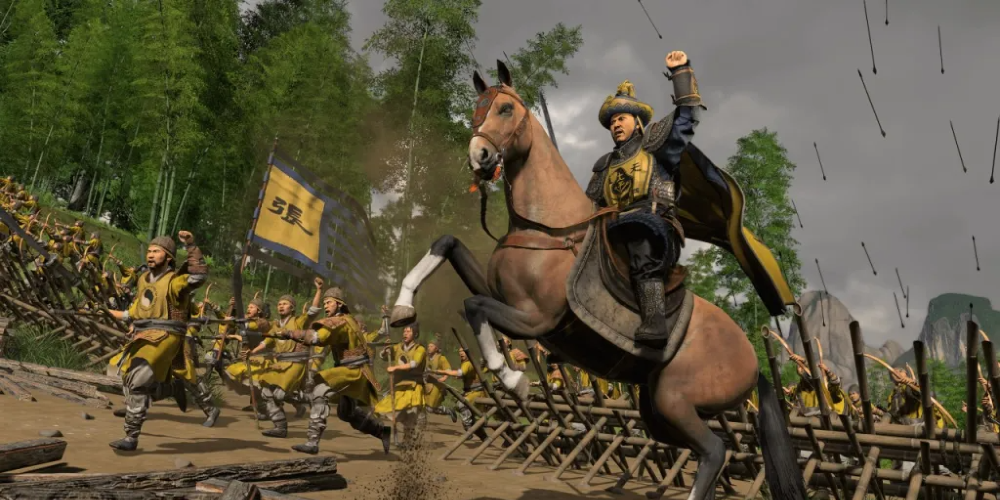
In the vast panorama of video gaming, where the visual spectacle often claims the throne of importance, there lies an unsung hero that significantly contributes to the immersive experience — sound design and music. "Total War: Three Kingdoms," developed by Creative Assembly and released in 2019, serves as a testament to the profound impact that auditory elements can have on gameplay. Set in the tumultuous times of the Three Kingdoms period in ancient China, this title not only captivates players with its intricate strategies and historical narratives but also envelops them in an atmospheric cocoon woven from the threads of its remarkable sound design and score. This exploration aims to dissect the components of the game's audio landscape, understanding how it complements the visual narrative, enhances gameplay, and ultimately, cements "Total War: Three Kingdoms" as an exemplar of acoustic excellence in the gaming industry.
A Symphony of Strategy: The Music of Three Kingdoms
At the heart of "Total War: Three Kingdoms" lies its music — a meticulously crafted score that serves as both a backdrop and a narrative device. Composed with an understanding of the era it represents, the soundtrack blends traditional Chinese instruments with orchestral elements to create a soundscape that is as dynamic as the game's ever-evolving storylines. From the stirring strings that accompany your army's march across the Chinese landscape, to the delicate pipa melodies that play as you ponder your next diplomatic move, every piece of music in the game is designed to enhance the emotional and strategic depth of the player's experience.

The composers, Richard Beddow and others, have gone to great lengths to ensure the authenticity and emotional resonance of the score. They incorporated a wide array of traditional Chinese instruments, such as the erhu, guzheng, and dizi, into the compositions, lending an air of authenticity to the game's setting. Furthermore, the music is adaptive; it responds to the gameplay, shifting seamlessly from the tranquility of a peaceful province to the intensity of a battlefield, mirroring the player’s actions and decisions. This responsiveness not only augments the gaming experience but also underscores the narrative significance of music as a storytelling device in "Total War: Three Kingdoms."
Echoes of the Empire: The Sound Design of Three Kingdoms
While the score of "Total War: Three Kingdoms" sets the stage, it is the game's sound design that fills the world with life. From the cacophony of battle cries and clashing weapons to the serene sounds of nature that permeate the Chinese countryside, the sound effects in "Total War: Three Kingdoms" are crafted with an eye (or rather, an ear) for detail that is nothing short of remarkable.
The sound team at Creative Assembly employed an array of techniques to capture and create the diverse sounds needed to bring the Three Kingdoms period to life. Field recordings, digital synthesis, and Foley artistry were combined to produce the authentic sounds of ancient Chinese warfare, as well as the more subtle ambient noises that define the game's various environments. The result is a rich tapestry of sound that not only grounds the player in the game's historical setting but also enhances the realism and immediacy of the gameplay.
Ambient sounds, in particular, play a crucial role in creating an immersive atmosphere in "Total War: Three Kingdoms." The rustling of leaves, the babbling of brooks, and the distant cries of animals contribute to a sense of place that visuals alone cannot achieve. These sounds do more than just decorate the game's landscapes; they breathe life into them, transforming static images into living, breathing worlds that players can lose themselves in.
Harmony and Conquest: The Role of Audio in Game Immersion and Strategy

The combination of music and sound design in "Total War: Three Kingdoms" significantly elevates the gameplay experience, serving as more than a mere enhancement of its visual charm. Audio cues, for instance, serve as vital tools for strategic gameplay, alerting players to enemy movements, changes in weather, or the morale of their troops. This not only adds a layer of depth to the game's strategy but also increases player engagement by requiring them to rely on their auditory senses as much as their visual ones.
Additionally, the significance of the game's sound environment is immense. The harmonious collaboration of music and sound effects plays a crucial role in drawing out various emotions, ranging from the thrill of triumph to the anxiety of a looming attack. This emotional engagement is key to player immersion, drawing them into the world of the Three Kingdoms and compelling them to invest in the fates of their characters and the outcomes of their campaigns.
Conclusion
In the grand tapestry of "Total War: Three Kingdoms," the music and sound design stand out as masterful complements to the game's visual and narrative elements, creating an immersive experience that is both emotionally resonant and strategically engaging. The game serves as a shining example of how audio can elevate the gaming experience, transforming a virtual world into a living, breathing universe that players can truly inhabit. As the gaming industry continues to evolve, the symphony of war that "Total War: Three Kingdoms" conducts will undoubtedly remain a benchmark for acoustic excellence, reminding us of the profound impact that sound can have on the art of digital storytelling.
